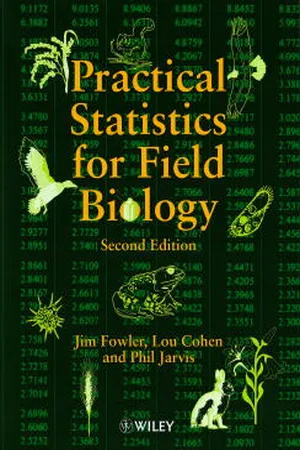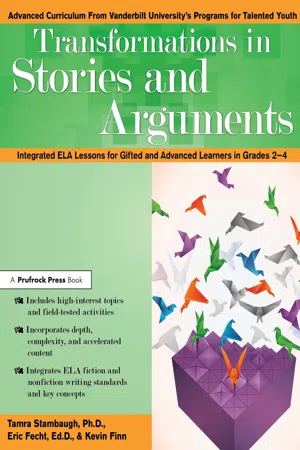Data transformations
Data transformations refer to the process of converting, manipulating, or reorganizing data to make it more suitable for analysis or presentation. In mathematics, data transformations often involve applying functions or operations to a set of data points, such as scaling, shifting, or applying mathematical functions like logarithms or exponentials. These transformations can help reveal patterns, relationships, or insights within the data.
4 Key excerpts on "Data transformations"
- eBook - ePub
Statistical Data Analysis Explained
Applied Environmental Statistics with R
- Clemens Reimann, Peter Filzmoser, Robert Garrett, Rudolf Dutter(Authors)
- 2011(Publication Date)
- Wiley(Publisher)
...10 Improving Data Behaviour for Statistical Analysis: Ranking and Transformations Sorting the data will often provide a better appreciation of the values of a variable. It is also possible to replace the data by the ranks of the sorted values and continue statistical analysis with these ranks. Data transformations, which usually consist of relatively simple mathematical operations, are frequently required. There are several reasons for carrying out transformations. One reason may be that it is required that the data approach a normal distribution. Another reason could be that some statistical methods require comparability (equality) of the variance, or comparability of both mean and variance. For graphical representations it can also be useful to transform variables so that they span the same range of data. Transformations can condition the data so that they more closely meet these requirements. Sometimes the deviations from the average concentration of an element may be of interest. In that case it can be advantageous to move the origin (0) to the centre of the data. This can be achieved by subtracting the location (MEAN, MEDIAN, etc.) from each single data value. Because applied geochemical and environmental data often contain outliers, preferably one should use the MEDIAN as the estimate of central location as it is unchanged by extreme values. When working with at least two variables in a statistical analysis, it will often be advantageous for all variables to have the same weight (have the same scale). A typical example in applied geochemistry is the enormous difference in concentration between major and trace elements (often five orders of magnitude)...
- Caryl Lorandini(Author)
- 2021(Publication Date)
- Barrons Educational Services(Publisher)
...13 TRANSFORMATIONAL GEOMETRY WHAT YOU WILL LEARN • The properties of dilations, rotations, reflections, and translations • How to describe the effect of dilations, translations, rotations, and reflections on two-dimensional figures using coordinates SECTIONS IN THIS CHAPTER • What Is Transformational Geometry? • What Is a Reflection? • What Is a Translation? • What Is a Rotation? • What Is a Dilation? • What Is Symmetry? • What Are Series of Transformations? 13.1 What Is Transformational Geometry? The word transform means “to change.” A transformation can be a change in size or location. People often think of skateboarders or figure skaters as they do flips or turns. DEFINITION Transformation The result of a change made to an object. The first three transformations are shown below. They preserve the size as well as the shape of an object. Reflection (flip): Rotation (turn): Translation (slide): All of these transformations change the location of an object, but each in a different way. These are considered rigid motions. The fourth transformation is dilation. A dilation is different because it changes the location and the size. It is not a rigid motion unless the scale factor is 1. Dilation (shrink or stretch): The vocabulary should come easy as it might be familiar to you. The original figure is the pre-image...
- eBook - ePub
- Jim Fowler, Lou Cohen, Philip Jarvis(Authors)
- 2013(Publication Date)
- Wiley(Publisher)
...In certain techniques, however, the object is to estimate the number of items in some population. In such cases, a transformed number may be difficult to interpret – many biologists would be hard pressed to think of flounders in angular degree units! An example is given in Section 11.5. There, the number is restored to the original scale by the process of back-transforming. This is simply a reversal of transformation. (a) Log x transformation : To back-transform 1.380, obtain the antilog. Antilog 1.380 = 24. (b) Arcsinh transformation : To back-transform 2.0947, take the sinh (hyp + syn keys). sinh 2.0947 = 4. (c) Square root x transformation : To back-transform 3.464, obtain the square. 3.464 2 = 12. (d) Square root (x + 0.5) transformation : To back-transform 3.937, obtain the square and subtract 0.5. 3.937 2 – 0.5 = 15. (e) Arcsine transformation : To back-transform 28.2, obtain the sine and square. (sin 28.2) 2 = 0.2233. 10.7 Is data transformation really necessary? Users of statistics are sometimes accused of ‘fiddling’ or ‘massaging’ data if their observations do not at first support their predictions. Is the transformation of data by the methods we have outlined a dubious form of statistical massage? The answer is a firm no ! First, data transformation is a well-established mathematical practice; the units of acidity (pH), noise (decibels) and seismic activity (Richter units) are three well-known examples of transformed scales. Second, in statistics the transformation of data is undertaken a priori ; that is to say, it is planned in advance as part of the statistical technique. Transformation is not used as an afterthought (a posteriori) to change an initial ‘unfavourable’ result. If it is, then this is cheating! Transformation merely ensures that a particular statistical method can be validly applied. Although the process of transforming data is not difficult, with large data sets it can be laborious and repetitive even with a calculator...
- eBook - ePub
Transformations in Stories and Arguments
Integrated ELA Lessons for Gifted and Advanced Learners in Grades 2-4
- Tamra Stambaugh, Eric Fecht, Kevin Finn(Authors)
- 2021(Publication Date)
- Routledge(Publisher)
...Lesson 11 Transformations in Mathematics DOI: 10.4324/9781003239246-11 Key Question How do different representations of data transform the message or idea that is conveyed? Objectives Content: To analyze and interpret fiction, nonfiction, and art, students will be able to: compare and contrast how literary, visual, informational, and/or primary source texts reveal patterns and themes; and identify and analyze transformations in stories and real-world contexts and discuss how they are shaped by the author and real-world events. Process: To develop interpretation, analysis, and communication skills in the language arts, students will be able to: justify inferences and evidence from the text.; apply evidence to support explanations and opinions relative to a question, text, or issue; and respond to an analysis of literature, nonfiction, or art by developing arguments or elaborating on explanations by writing a variety of texts (e.g., essays, paragraphs, or narratives), including relevant and sufficient evidence to support claims. Concept: To develop conceptual thinking about transformation in language arts and additional content areas, students will be able to: use inductive reasoning to develop generalizations about transformations; explain how transformations can bring about other transformations using evidence from multiple texts, situations, and disciplines; examine ways in which transformations are a result of internal or external forces using multiple...



